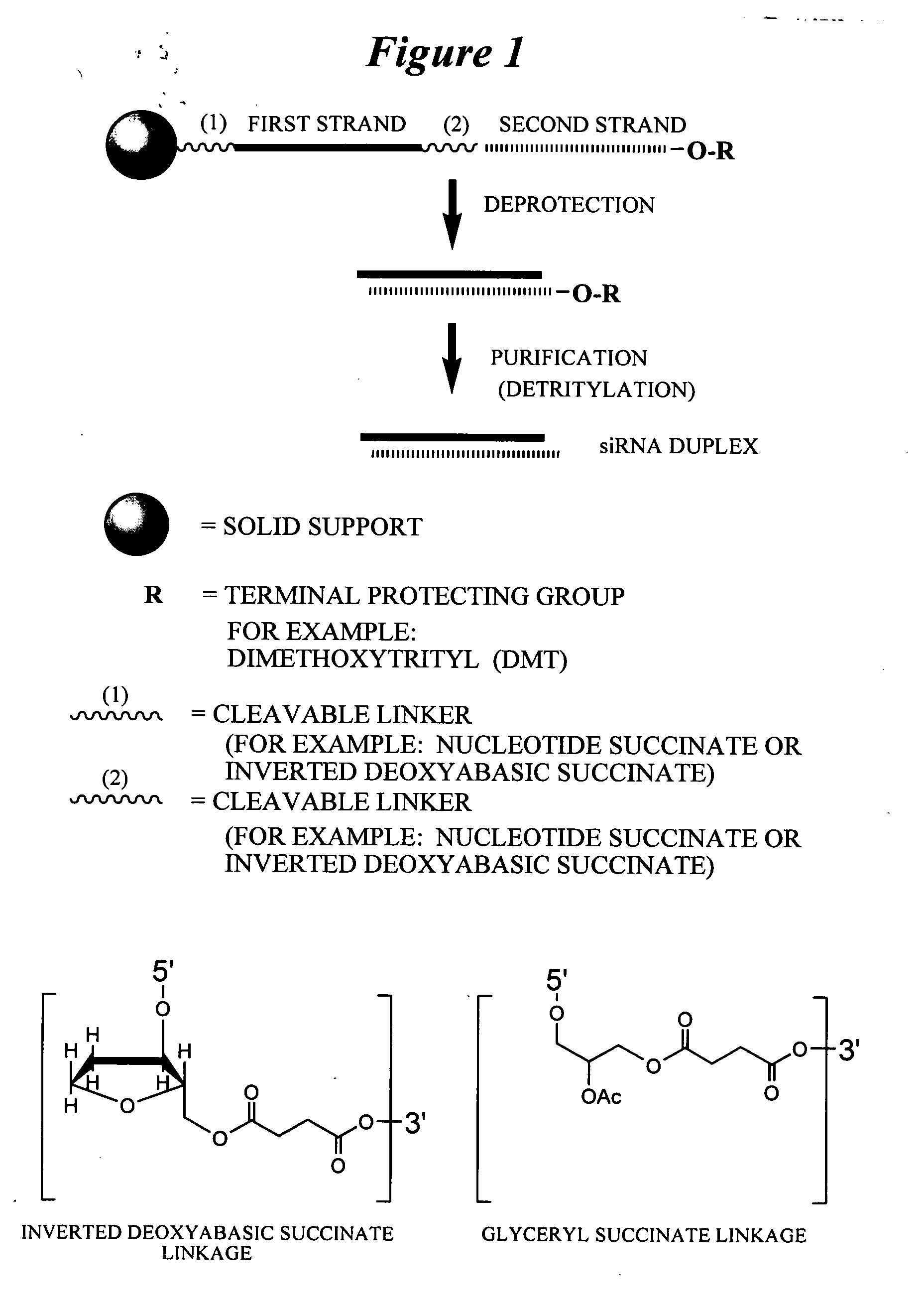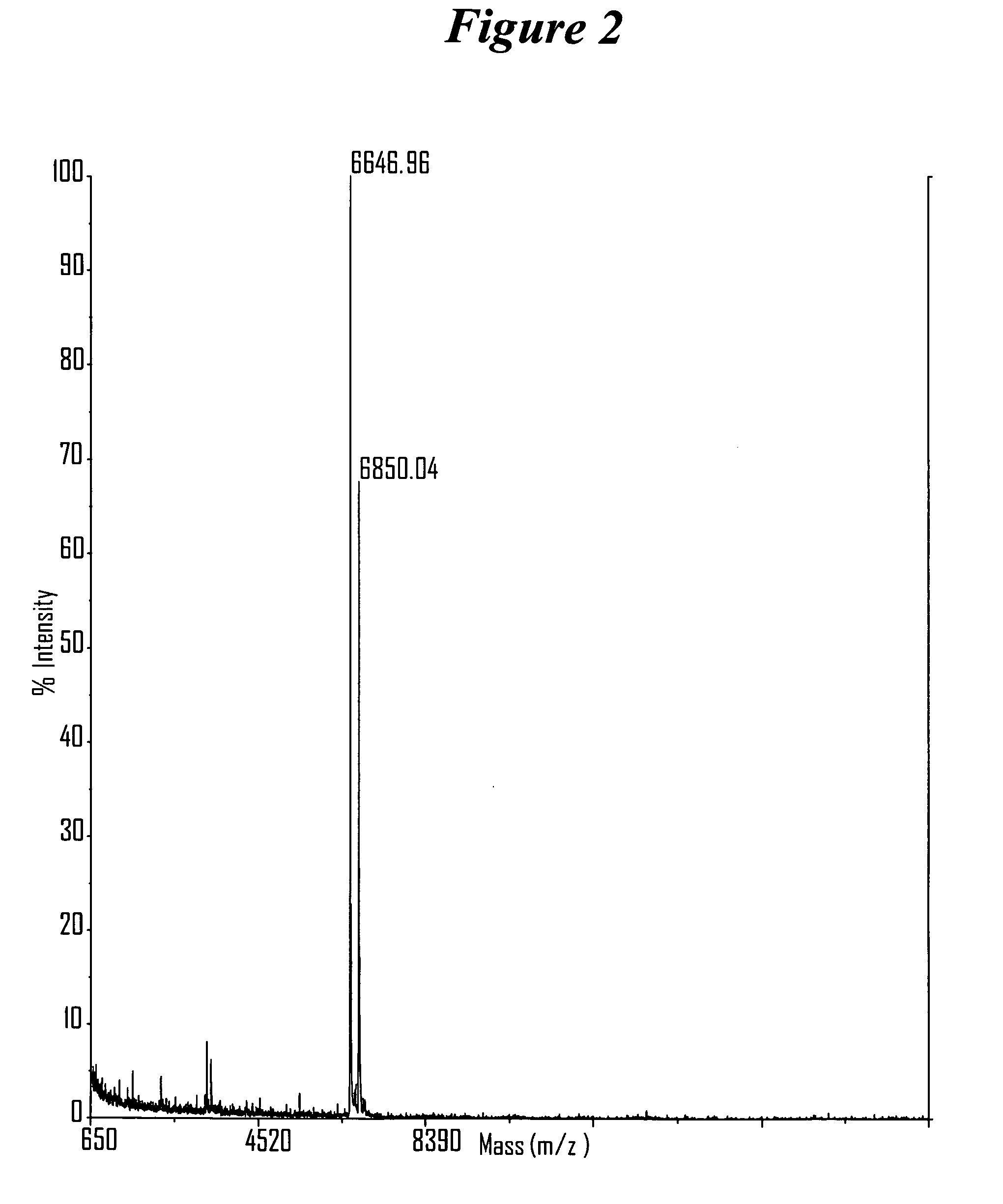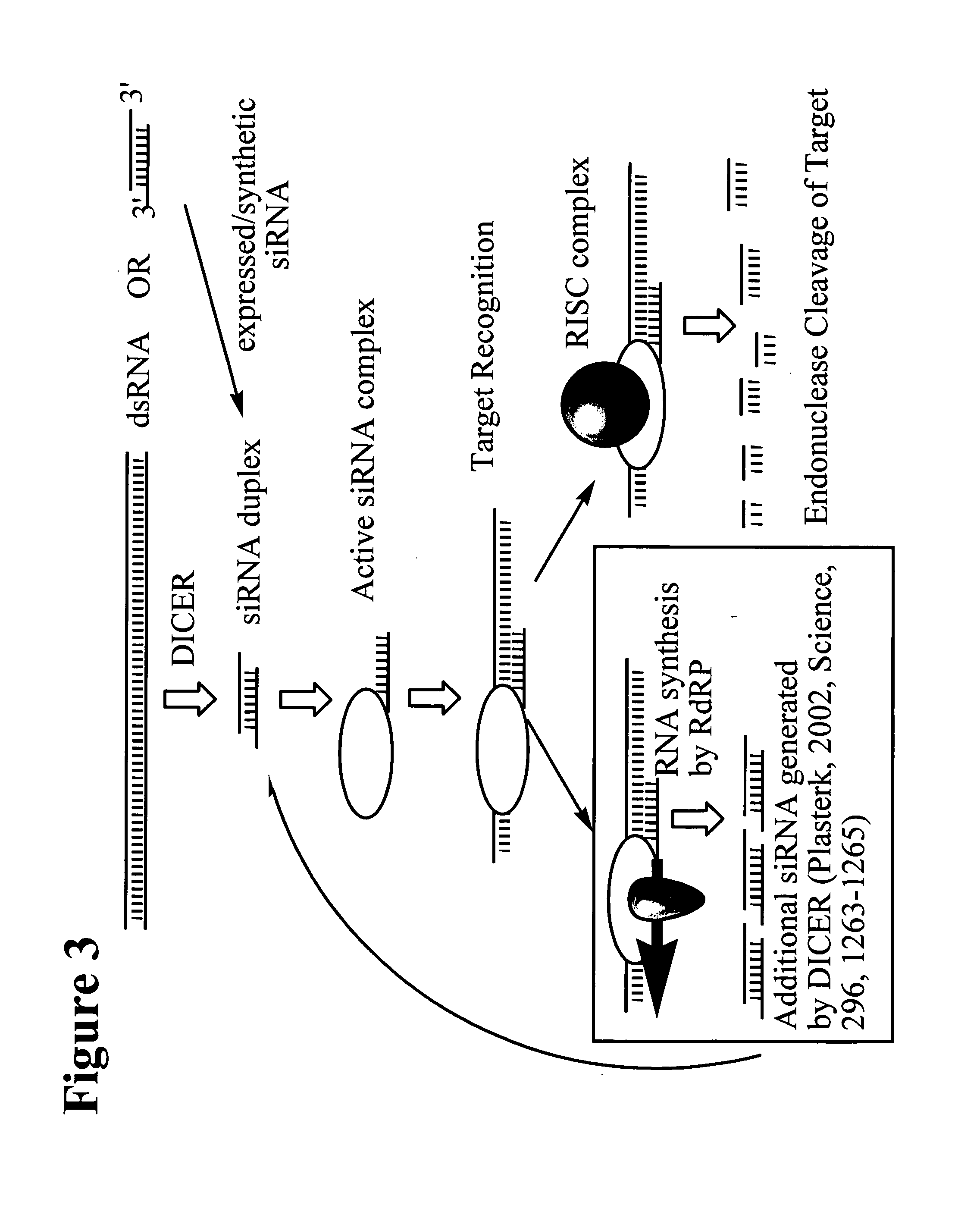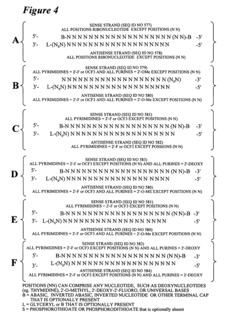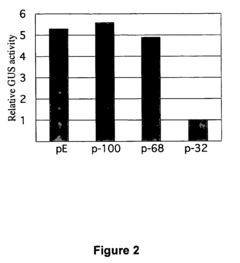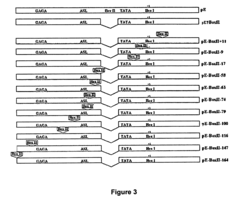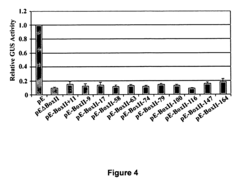Mechanistic Insights into Abscisic Acid-Induced Gene Expression
JUL 14, 20259 MIN READ
Generate Your Research Report Instantly with AI Agent
Patsnap Eureka helps you evaluate technical feasibility & market potential.
ABA Signaling Background
Abscisic acid (ABA) is a crucial plant hormone that plays a pivotal role in regulating various physiological processes, particularly in response to environmental stresses. The ABA signaling pathway has been extensively studied over the past few decades, revealing a complex network of molecular interactions that ultimately lead to changes in gene expression and plant adaptation.
The core ABA signaling pathway involves a series of key components, including ABA receptors, protein phosphatases, and transcription factors. The PYR/PYL/RCAR family of proteins serves as the primary ABA receptors. These proteins undergo conformational changes upon binding to ABA, enabling them to interact with and inhibit type 2C protein phosphatases (PP2Cs). PP2Cs are negative regulators of ABA signaling, and their inhibition allows for the activation of downstream components.
One of the critical downstream targets of PP2Cs is the SNF1-related protein kinase 2 (SnRK2) family. When PP2Cs are inhibited by ABA-bound receptors, SnRK2s become activated through autophosphorylation. These activated SnRK2s then phosphorylate various substrates, including transcription factors such as the ABA-responsive element binding factors (ABFs/AREBs).
The phosphorylation of ABFs/AREBs enhances their ability to bind to ABA-responsive elements (ABREs) in the promoter regions of ABA-responsive genes. This binding triggers the recruitment of transcriptional machinery and ultimately leads to the expression of genes involved in stress tolerance, seed dormancy, and other ABA-mediated responses.
In addition to the core signaling components, numerous other factors contribute to the complexity and fine-tuning of ABA-induced gene expression. These include other transcription factors, chromatin remodeling complexes, and various regulatory proteins that modulate the activity of the core components or provide crosstalk with other signaling pathways.
Recent advances in genomics and molecular biology techniques have greatly expanded our understanding of the ABA signaling network. High-throughput sequencing and proteomics approaches have identified numerous ABA-responsive genes and proteins, revealing the broad impact of ABA on plant physiology. Furthermore, structural biology studies have provided detailed insights into the molecular mechanisms of ABA perception and signal transduction.
Understanding the intricacies of ABA signaling is crucial for developing strategies to enhance crop resilience to environmental stresses, particularly in the face of climate change. Ongoing research continues to uncover new components and regulatory mechanisms within the ABA signaling pathway, paving the way for innovative approaches to improve plant stress tolerance and agricultural productivity.
The core ABA signaling pathway involves a series of key components, including ABA receptors, protein phosphatases, and transcription factors. The PYR/PYL/RCAR family of proteins serves as the primary ABA receptors. These proteins undergo conformational changes upon binding to ABA, enabling them to interact with and inhibit type 2C protein phosphatases (PP2Cs). PP2Cs are negative regulators of ABA signaling, and their inhibition allows for the activation of downstream components.
One of the critical downstream targets of PP2Cs is the SNF1-related protein kinase 2 (SnRK2) family. When PP2Cs are inhibited by ABA-bound receptors, SnRK2s become activated through autophosphorylation. These activated SnRK2s then phosphorylate various substrates, including transcription factors such as the ABA-responsive element binding factors (ABFs/AREBs).
The phosphorylation of ABFs/AREBs enhances their ability to bind to ABA-responsive elements (ABREs) in the promoter regions of ABA-responsive genes. This binding triggers the recruitment of transcriptional machinery and ultimately leads to the expression of genes involved in stress tolerance, seed dormancy, and other ABA-mediated responses.
In addition to the core signaling components, numerous other factors contribute to the complexity and fine-tuning of ABA-induced gene expression. These include other transcription factors, chromatin remodeling complexes, and various regulatory proteins that modulate the activity of the core components or provide crosstalk with other signaling pathways.
Recent advances in genomics and molecular biology techniques have greatly expanded our understanding of the ABA signaling network. High-throughput sequencing and proteomics approaches have identified numerous ABA-responsive genes and proteins, revealing the broad impact of ABA on plant physiology. Furthermore, structural biology studies have provided detailed insights into the molecular mechanisms of ABA perception and signal transduction.
Understanding the intricacies of ABA signaling is crucial for developing strategies to enhance crop resilience to environmental stresses, particularly in the face of climate change. Ongoing research continues to uncover new components and regulatory mechanisms within the ABA signaling pathway, paving the way for innovative approaches to improve plant stress tolerance and agricultural productivity.
ABA-Responsive Genes
Abscisic acid (ABA) is a crucial plant hormone that plays a pivotal role in regulating various physiological processes, particularly in response to environmental stresses. ABA-responsive genes are a diverse group of genes that are activated or repressed in response to ABA signaling. These genes are essential for plant adaptation to abiotic stresses such as drought, salinity, and cold.
The ABA-responsive genes can be broadly categorized into two main groups: early and late response genes. Early response genes are rapidly induced within minutes to hours of ABA exposure and often encode transcription factors that regulate the expression of late response genes. Late response genes, on the other hand, are induced several hours after ABA treatment and are typically involved in stress tolerance mechanisms.
One of the key mechanisms by which ABA regulates gene expression is through the ABA-responsive element (ABRE) present in the promoter regions of many ABA-responsive genes. The ABRE is a conserved cis-acting element with the core sequence ACGTGGC. ABA-responsive element binding factors (ABFs) are transcription factors that recognize and bind to ABREs, thereby activating gene expression.
In addition to ABREs, other cis-acting elements such as coupling elements (CE) and MYB recognition sites are often found in the promoters of ABA-responsive genes. These elements work in conjunction with ABREs to fine-tune gene expression in response to ABA and other environmental cues.
The ABA signaling pathway leading to gene expression involves a complex network of proteins. Key components include the PYR/PYL/RCAR ABA receptors, protein phosphatases (PP2Cs), and SNF1-related protein kinases (SnRK2s). Upon ABA binding to the receptors, PP2Cs are inhibited, allowing SnRK2s to become active. Activated SnRK2s then phosphorylate downstream targets, including ABFs, leading to the activation of ABA-responsive genes.
Recent studies have revealed the importance of epigenetic modifications in regulating ABA-responsive gene expression. Histone modifications, such as acetylation and methylation, play crucial roles in modulating chromatin structure and accessibility, thereby influencing gene expression. For instance, the histone deacetylase HDA6 has been shown to be involved in ABA-mediated gene repression.
The advent of high-throughput sequencing technologies has greatly expanded our understanding of ABA-responsive genes. Transcriptome analyses have revealed that thousands of genes are differentially expressed in response to ABA treatment. These studies have also highlighted the complexity of ABA-mediated gene regulation, with many genes showing tissue-specific or temporal-specific responses to ABA.
Understanding the mechanisms of ABA-induced gene expression is crucial for developing strategies to enhance crop stress tolerance. By manipulating key components of the ABA signaling pathway or engineering ABA-responsive promoters, researchers aim to develop crops with improved drought and salinity tolerance, addressing critical challenges in agriculture in the face of climate change.
The ABA-responsive genes can be broadly categorized into two main groups: early and late response genes. Early response genes are rapidly induced within minutes to hours of ABA exposure and often encode transcription factors that regulate the expression of late response genes. Late response genes, on the other hand, are induced several hours after ABA treatment and are typically involved in stress tolerance mechanisms.
One of the key mechanisms by which ABA regulates gene expression is through the ABA-responsive element (ABRE) present in the promoter regions of many ABA-responsive genes. The ABRE is a conserved cis-acting element with the core sequence ACGTGGC. ABA-responsive element binding factors (ABFs) are transcription factors that recognize and bind to ABREs, thereby activating gene expression.
In addition to ABREs, other cis-acting elements such as coupling elements (CE) and MYB recognition sites are often found in the promoters of ABA-responsive genes. These elements work in conjunction with ABREs to fine-tune gene expression in response to ABA and other environmental cues.
The ABA signaling pathway leading to gene expression involves a complex network of proteins. Key components include the PYR/PYL/RCAR ABA receptors, protein phosphatases (PP2Cs), and SNF1-related protein kinases (SnRK2s). Upon ABA binding to the receptors, PP2Cs are inhibited, allowing SnRK2s to become active. Activated SnRK2s then phosphorylate downstream targets, including ABFs, leading to the activation of ABA-responsive genes.
Recent studies have revealed the importance of epigenetic modifications in regulating ABA-responsive gene expression. Histone modifications, such as acetylation and methylation, play crucial roles in modulating chromatin structure and accessibility, thereby influencing gene expression. For instance, the histone deacetylase HDA6 has been shown to be involved in ABA-mediated gene repression.
The advent of high-throughput sequencing technologies has greatly expanded our understanding of ABA-responsive genes. Transcriptome analyses have revealed that thousands of genes are differentially expressed in response to ABA treatment. These studies have also highlighted the complexity of ABA-mediated gene regulation, with many genes showing tissue-specific or temporal-specific responses to ABA.
Understanding the mechanisms of ABA-induced gene expression is crucial for developing strategies to enhance crop stress tolerance. By manipulating key components of the ABA signaling pathway or engineering ABA-responsive promoters, researchers aim to develop crops with improved drought and salinity tolerance, addressing critical challenges in agriculture in the face of climate change.
Current ABA Mechanisms
Abscisic acid (ABA) is a crucial plant hormone that regulates various physiological processes, including stress responses and gene expression. Current ABA mechanisms involve a complex signaling cascade that begins with ABA perception and culminates in transcriptional changes.
The primary ABA receptors are the PYR/PYL/RCAR protein family. These receptors undergo conformational changes upon binding to ABA, enabling them to interact with and inhibit type 2C protein phosphatases (PP2Cs). PP2Cs are negative regulators of ABA signaling, and their inhibition allows for the activation of downstream components.
One of the key downstream elements are the SNF1-related protein kinases (SnRK2s). When PP2Cs are inhibited, SnRK2s become active through autophosphorylation. Activated SnRK2s then phosphorylate various targets, including transcription factors and ion channels, to mediate ABA responses.
The ABRE-binding factors (ABFs) are among the most important transcription factors in ABA-induced gene expression. These bZIP transcription factors bind to ABA-responsive elements (ABREs) in the promoters of ABA-responsive genes. Phosphorylation by SnRK2s enhances their DNA-binding ability and transcriptional activity.
In addition to ABFs, other transcription factors such as ABI3, ABI4, and ABI5 play crucial roles in ABA-mediated gene expression. These factors often work in concert with ABFs and other regulatory proteins to fine-tune the transcriptional response to ABA.
Epigenetic modifications also contribute to ABA-induced gene expression. Histone modifications, such as acetylation and methylation, can alter chromatin structure and accessibility, influencing the binding of transcription factors to their target genes. ABA has been shown to induce changes in histone modifications at specific loci, contributing to the overall transcriptional response.
Recent studies have revealed the importance of RNA-binding proteins in post-transcriptional regulation of ABA-responsive genes. These proteins can affect mRNA stability, localization, and translation efficiency, adding another layer of complexity to ABA-mediated gene expression.
The ABA signaling pathway also interacts with other hormone signaling pathways, such as those of auxin, ethylene, and jasmonic acid. This crosstalk allows for integration of multiple environmental and developmental signals, resulting in a coordinated gene expression response.
Understanding these current ABA mechanisms provides a foundation for further research into the fine-tuning of ABA responses and potential applications in improving crop stress tolerance and productivity.
The primary ABA receptors are the PYR/PYL/RCAR protein family. These receptors undergo conformational changes upon binding to ABA, enabling them to interact with and inhibit type 2C protein phosphatases (PP2Cs). PP2Cs are negative regulators of ABA signaling, and their inhibition allows for the activation of downstream components.
One of the key downstream elements are the SNF1-related protein kinases (SnRK2s). When PP2Cs are inhibited, SnRK2s become active through autophosphorylation. Activated SnRK2s then phosphorylate various targets, including transcription factors and ion channels, to mediate ABA responses.
The ABRE-binding factors (ABFs) are among the most important transcription factors in ABA-induced gene expression. These bZIP transcription factors bind to ABA-responsive elements (ABREs) in the promoters of ABA-responsive genes. Phosphorylation by SnRK2s enhances their DNA-binding ability and transcriptional activity.
In addition to ABFs, other transcription factors such as ABI3, ABI4, and ABI5 play crucial roles in ABA-mediated gene expression. These factors often work in concert with ABFs and other regulatory proteins to fine-tune the transcriptional response to ABA.
Epigenetic modifications also contribute to ABA-induced gene expression. Histone modifications, such as acetylation and methylation, can alter chromatin structure and accessibility, influencing the binding of transcription factors to their target genes. ABA has been shown to induce changes in histone modifications at specific loci, contributing to the overall transcriptional response.
Recent studies have revealed the importance of RNA-binding proteins in post-transcriptional regulation of ABA-responsive genes. These proteins can affect mRNA stability, localization, and translation efficiency, adding another layer of complexity to ABA-mediated gene expression.
The ABA signaling pathway also interacts with other hormone signaling pathways, such as those of auxin, ethylene, and jasmonic acid. This crosstalk allows for integration of multiple environmental and developmental signals, resulting in a coordinated gene expression response.
Understanding these current ABA mechanisms provides a foundation for further research into the fine-tuning of ABA responses and potential applications in improving crop stress tolerance and productivity.
ABA-Induced Transcription
01 Regulation of abscisic acid biosynthesis genes
Research focuses on understanding and manipulating the genes involved in abscisic acid biosynthesis. This includes identifying key regulatory elements and transcription factors that control the expression of these genes, potentially leading to improved stress tolerance in plants.- Regulation of abscisic acid biosynthesis genes: Research focuses on understanding and manipulating the expression of genes involved in abscisic acid biosynthesis. This includes identifying key regulatory elements and transcription factors that control the production of abscisic acid in plants, which is crucial for stress responses and developmental processes.
- Abscisic acid signaling pathway genes: Studies investigate the expression and function of genes involved in the abscisic acid signaling pathway. This includes receptors, protein kinases, and transcription factors that mediate plant responses to abscisic acid, affecting processes such as stomatal closure and seed dormancy.
- Genetic engineering for drought tolerance: Research focuses on modifying the expression of abscisic acid-related genes to enhance drought tolerance in plants. This involves overexpressing or silencing specific genes to alter abscisic acid levels or sensitivity, thereby improving plant performance under water-limited conditions.
- Abscisic acid-responsive promoters: Identification and characterization of promoter regions that are responsive to abscisic acid. These promoters can be used to drive the expression of desired genes in response to abscisic acid, allowing for precise control of gene expression in transgenic plants.
- Cross-talk between abscisic acid and other hormone pathways: Investigation of gene expression patterns related to the interaction between abscisic acid and other plant hormones. This research aims to understand how abscisic acid signaling integrates with other hormonal pathways to regulate plant growth, development, and stress responses.
02 Abscisic acid signaling pathway genes
Studies investigate the genes involved in the abscisic acid signaling pathway, including receptors, kinases, and transcription factors. Understanding these genes can help in developing plants with enhanced responses to environmental stresses and improved water use efficiency.Expand Specific Solutions03 Genetic engineering for drought tolerance
Research focuses on modifying abscisic acid-related genes to enhance drought tolerance in plants. This includes overexpression of key genes or modification of regulatory elements to improve plant responses to water stress conditions.Expand Specific Solutions04 Abscisic acid-responsive promoters
Identification and characterization of abscisic acid-responsive promoters are crucial for understanding gene expression patterns under stress conditions. These promoters can be used to develop stress-inducible expression systems for crop improvement.Expand Specific Solutions05 Cross-talk between abscisic acid and other hormone pathways
Research explores the interactions between abscisic acid signaling and other plant hormone pathways at the gene expression level. Understanding these interactions can lead to more comprehensive strategies for improving plant stress responses and growth regulation.Expand Specific Solutions
Key ABA Research Groups
The research into "Mechanistic Insights into Abscisic Acid-Induced Gene Expression" is in a mature stage of development, with significant market potential in the agricultural biotechnology sector. The global market for plant growth regulators, including abscisic acid-related technologies, is expanding rapidly. Key players in this field include Evogene Ltd., Valent BioSciences Corp., and Pioneer Hi-Bred International, Inc., who are leveraging advanced genomics and biotechnology to develop innovative crop protection and enhancement solutions. Academic institutions like China Agricultural University and Ghent University are contributing fundamental research, while companies such as Genentech, Inc. are exploring potential applications in broader life sciences contexts.
Evogene Ltd.
Technical Solution: Evogene Ltd. has developed a comprehensive approach to understanding abscisic acid (ABA)-induced gene expression in plants. Their technology platform, called Gene2Product™, integrates computational biology and big data analytics to identify key genes and regulatory elements involved in ABA signaling[1]. They have successfully mapped the ABA-responsive gene network, identifying novel transcription factors and cis-regulatory elements that mediate ABA-induced gene expression[2]. Evogene's research has revealed mechanistic insights into the temporal and spatial regulation of ABA-responsive genes, including the identification of specific chromatin modifications associated with ABA-induced transcriptional activation[3]. Their approach combines high-throughput phenotyping with advanced genomics to validate gene function in planta, providing a holistic view of ABA signaling mechanisms[4].
Strengths: Comprehensive genomics approach, integration of computational and experimental methods, high-throughput validation. Weaknesses: Potential limitations in translating findings to diverse plant species, reliance on model organisms for initial discoveries.
China Agricultural University
Technical Solution: China Agricultural University has made significant contributions to understanding the mechanistic insights of ABA-induced gene expression. Their research team has employed cutting-edge techniques such as ChIP-seq and RNA-seq to elucidate the genome-wide binding patterns of key ABA-responsive transcription factors[1]. They have identified novel components of the ABA signaling pathway, including previously unknown protein kinases and phosphatases that modulate the activity of ABA-responsive transcription factors[2]. The university's researchers have also developed innovative CRISPR-Cas9 based approaches to systematically dissect the function of ABA-responsive cis-regulatory elements in vivo[3]. Their work has revealed complex interactions between ABA signaling and other stress response pathways, providing a more nuanced understanding of plant stress adaptation mechanisms[4].
Strengths: Strong expertise in molecular biology and genomics, innovative use of CRISPR technology, comprehensive analysis of ABA signaling networks. Weaknesses: Potential focus on model plants may limit immediate application to crops, possible challenges in translating molecular insights to field conditions.
Core ABA Signaling Proteins
RNA interference mediated inhibition of proprotein convertase subtilisin Kexin 9 (PCSK9) gene expression using short interfering nucleic acid (siNA)
PatentInactiveUS20070173473A1
Innovation
- Development of chemically modified short interfering nucleic acid (siNA) molecules, including siRNA, dsRNA, and shRNA, that can specifically target PCSK9 genes and pathways, using lipid nanoparticle formulations to enhance delivery and stability, and inhibit endogenous RNA molecules to modulate gene expression through RNA interference.
Methods and compositions for regulating gene expression in plant cells
PatentInactiveUS7847064B2
Innovation
- Development of novel chimeric promoters and gene expression cassettes that incorporate the Box II element and its derivatives, along with transcription factors containing the acidic domain of RF2a, to regulate gene expression in plant cells, allowing for the use of RF2a and RF2b to activate or enhance gene expression and the transfer of the acidic domain to unrelated DNA-binding proteins.
ABA in Crop Improvement
Abscisic acid (ABA) plays a crucial role in crop improvement, particularly in enhancing stress tolerance and yield stability. The mechanistic insights into ABA-induced gene expression have opened new avenues for developing resilient crop varieties capable of withstanding various environmental stresses.
ABA-mediated stress responses in plants involve complex signaling cascades that ultimately lead to the activation of stress-responsive genes. By understanding these molecular mechanisms, researchers have been able to manipulate ABA signaling pathways to improve crop performance under adverse conditions. For instance, overexpression of key ABA-responsive transcription factors, such as AREB/ABFs, has been shown to enhance drought tolerance in various crops, including rice, wheat, and maize.
One of the most significant applications of ABA-induced gene expression in crop improvement is the development of drought-tolerant varieties. By modulating the expression of ABA-responsive genes, scientists have created crops that can maintain productivity under water-limited conditions. This has been particularly important in regions prone to drought, where water scarcity is a major constraint to agricultural productivity.
ABA also plays a critical role in seed dormancy and germination, processes that are essential for crop establishment and yield. Manipulation of ABA signaling components has led to the development of crops with improved seed quality and germination rates. For example, fine-tuning ABA sensitivity in seeds has resulted in varieties with enhanced seedling vigor and better stand establishment under suboptimal conditions.
Furthermore, ABA-induced gene expression has been harnessed to improve crop quality traits. The hormone's involvement in fruit ripening and senescence processes has been exploited to develop fruits with extended shelf life and improved post-harvest characteristics. This has significant implications for reducing food waste and improving the global food supply chain.
Recent advances in genome editing technologies, such as CRISPR-Cas9, have provided powerful tools for precise manipulation of ABA-responsive genes in crops. This has enabled researchers to create novel crop varieties with tailored ABA responses, leading to improved stress tolerance and yield stability without compromising other agronomic traits.
In conclusion, the mechanistic insights into ABA-induced gene expression have revolutionized crop improvement strategies. By leveraging this knowledge, researchers continue to develop innovative solutions to address the challenges of global food security in the face of climate change and increasing environmental stresses.
ABA-mediated stress responses in plants involve complex signaling cascades that ultimately lead to the activation of stress-responsive genes. By understanding these molecular mechanisms, researchers have been able to manipulate ABA signaling pathways to improve crop performance under adverse conditions. For instance, overexpression of key ABA-responsive transcription factors, such as AREB/ABFs, has been shown to enhance drought tolerance in various crops, including rice, wheat, and maize.
One of the most significant applications of ABA-induced gene expression in crop improvement is the development of drought-tolerant varieties. By modulating the expression of ABA-responsive genes, scientists have created crops that can maintain productivity under water-limited conditions. This has been particularly important in regions prone to drought, where water scarcity is a major constraint to agricultural productivity.
ABA also plays a critical role in seed dormancy and germination, processes that are essential for crop establishment and yield. Manipulation of ABA signaling components has led to the development of crops with improved seed quality and germination rates. For example, fine-tuning ABA sensitivity in seeds has resulted in varieties with enhanced seedling vigor and better stand establishment under suboptimal conditions.
Furthermore, ABA-induced gene expression has been harnessed to improve crop quality traits. The hormone's involvement in fruit ripening and senescence processes has been exploited to develop fruits with extended shelf life and improved post-harvest characteristics. This has significant implications for reducing food waste and improving the global food supply chain.
Recent advances in genome editing technologies, such as CRISPR-Cas9, have provided powerful tools for precise manipulation of ABA-responsive genes in crops. This has enabled researchers to create novel crop varieties with tailored ABA responses, leading to improved stress tolerance and yield stability without compromising other agronomic traits.
In conclusion, the mechanistic insights into ABA-induced gene expression have revolutionized crop improvement strategies. By leveraging this knowledge, researchers continue to develop innovative solutions to address the challenges of global food security in the face of climate change and increasing environmental stresses.
ABA and Climate Adaptation
Abscisic acid (ABA) plays a crucial role in plant responses to environmental stresses, particularly those associated with climate change. As global temperatures rise and precipitation patterns become more erratic, understanding the mechanisms of ABA-induced gene expression becomes increasingly important for developing climate-resilient crops.
ABA is a key phytohormone that regulates various physiological processes in plants, including seed dormancy, germination, and stress responses. In the context of climate adaptation, ABA's role in mediating drought and heat stress tolerance is particularly significant. When plants encounter water deficit or high temperatures, ABA levels increase, triggering a cascade of signaling events that lead to the expression of stress-responsive genes.
The ABA signaling pathway involves a complex network of receptors, protein kinases, and transcription factors. Upon perception of ABA by the PYR/PYL/RCAR receptor family, a series of conformational changes occur, leading to the inhibition of PP2C phosphatases. This inhibition allows the activation of SnRK2 protein kinases, which in turn phosphorylate and activate various downstream targets, including transcription factors such as ABFs (ABA-responsive element binding factors).
These activated transcription factors bind to specific DNA sequences, known as ABA-responsive elements (ABREs), in the promoter regions of stress-responsive genes. This binding initiates the transcription of genes involved in various adaptive responses, such as stomatal closure, osmolyte accumulation, and antioxidant production. These responses help plants conserve water, maintain cellular homeostasis, and protect against oxidative damage under stress conditions.
Recent research has revealed additional layers of complexity in ABA-induced gene expression. Epigenetic modifications, such as DNA methylation and histone modifications, have been shown to play important roles in regulating the accessibility of ABA-responsive genes. Furthermore, the discovery of ABA-responsive long non-coding RNAs (lncRNAs) has opened up new avenues for understanding the fine-tuning of gene expression in response to stress.
As climate change continues to pose significant challenges to agriculture, harnessing the power of ABA-induced gene expression could be key to developing more resilient crops. By understanding the intricate mechanisms underlying this process, researchers can potentially engineer plants with enhanced stress tolerance or develop chemical compounds that mimic or enhance ABA signaling. Such advancements could lead to crops that are better equipped to withstand drought, heat waves, and other extreme weather events associated with a changing climate.
ABA is a key phytohormone that regulates various physiological processes in plants, including seed dormancy, germination, and stress responses. In the context of climate adaptation, ABA's role in mediating drought and heat stress tolerance is particularly significant. When plants encounter water deficit or high temperatures, ABA levels increase, triggering a cascade of signaling events that lead to the expression of stress-responsive genes.
The ABA signaling pathway involves a complex network of receptors, protein kinases, and transcription factors. Upon perception of ABA by the PYR/PYL/RCAR receptor family, a series of conformational changes occur, leading to the inhibition of PP2C phosphatases. This inhibition allows the activation of SnRK2 protein kinases, which in turn phosphorylate and activate various downstream targets, including transcription factors such as ABFs (ABA-responsive element binding factors).
These activated transcription factors bind to specific DNA sequences, known as ABA-responsive elements (ABREs), in the promoter regions of stress-responsive genes. This binding initiates the transcription of genes involved in various adaptive responses, such as stomatal closure, osmolyte accumulation, and antioxidant production. These responses help plants conserve water, maintain cellular homeostasis, and protect against oxidative damage under stress conditions.
Recent research has revealed additional layers of complexity in ABA-induced gene expression. Epigenetic modifications, such as DNA methylation and histone modifications, have been shown to play important roles in regulating the accessibility of ABA-responsive genes. Furthermore, the discovery of ABA-responsive long non-coding RNAs (lncRNAs) has opened up new avenues for understanding the fine-tuning of gene expression in response to stress.
As climate change continues to pose significant challenges to agriculture, harnessing the power of ABA-induced gene expression could be key to developing more resilient crops. By understanding the intricate mechanisms underlying this process, researchers can potentially engineer plants with enhanced stress tolerance or develop chemical compounds that mimic or enhance ABA signaling. Such advancements could lead to crops that are better equipped to withstand drought, heat waves, and other extreme weather events associated with a changing climate.
Unlock deeper insights with Patsnap Eureka Quick Research — get a full tech report to explore trends and direct your research. Try now!
Generate Your Research Report Instantly with AI Agent
Supercharge your innovation with Patsnap Eureka AI Agent Platform!
